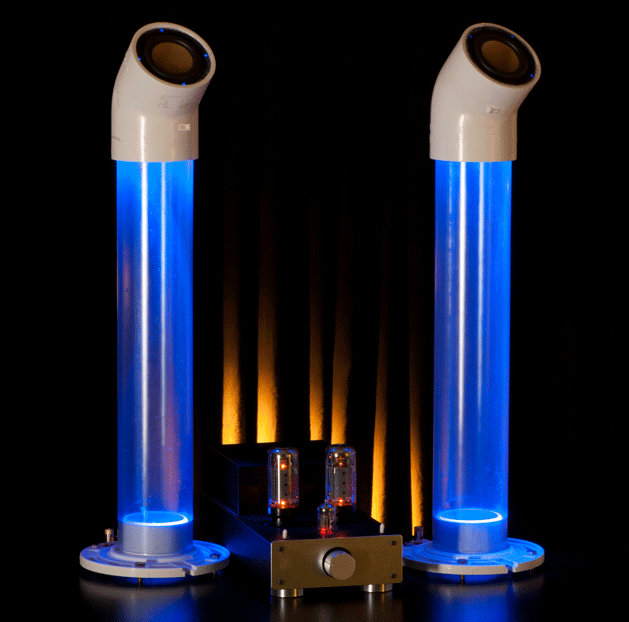
Minnesota-based maker, inventor, and public speaker William Gurstelle has authored seven books, with provocative titles like Absinthe and Flamethrowers, The Practical Pyromaniac, and Backyard Ballistics. He’s currently the Ballistics and Pyrotechnics Editor at Popular Mechanics and has been a contributing editor to MAKE for years. Bill has taught us how to make many projects on the pages of MAKE, from gravity catapults to flame tubes, and has penned his Remaking History column for the past 3 years, combining history lessons and project builds.
One project you’re particularly proud of:
1. My favorite project? It’s always the one I happen to be working on at the time! Right now, that’s a Warren truss bridge. Researching and building this project let me reconnect with the first real engineering course I took in college: Introduction to Statics. Every mechanical, aeronautical, and civil engineer in the world takes that class as a freshman and forgets 90% of it by the time they graduate. For me, designing and building the truss bridge was a great excuse to bone up on a cool but forgotten subject.

Two past mistakes you’ve learned the most from:
1. Making bulk buys is often a false economy. Sure, a box of 200 ¼”x2″ machine screws on the internet costs only a little more than buying 25 screws from a hardware store, and buying a gallon of hydrochloric acid doesn’t cost much more than a quart. But, my workshop isn’t huge and now I’ve got it packed with stuff that I doubt I’ll ever use up. Just buy what you need, when you need it.
2. Using the wrong tool. Yes, I’ve used a wrench for a hammer, a screwdriver for a chisel, Channellock pliers for a wrench, and so on. Usually it works, sort of, but sometimes it really makes for a bad job. Not real safe either. I’ve finally learned to go get the right tool for the job, even if I have to walk all the way back to the garage to get it.

Three new ideas that have excited you most lately:
1. Fast prototyping services are becoming more common. Recently, I used a laser-cutting service to get some project parts in a hurry and they were way better than anything I could cut out of plywood with a jigsaw. Stuff like pro-quality 3D printing, water jetting, and laser cutting is a real boon to makers.
2. Community workshops are wonderful places. Shared tools are great, but shared expertise is even better.
3. Shop class is coming back, sort of. Once something gets thought up, it has to be turned into reality by a carpenter, a millwright, a machinist, a maker. Knowing how to do that is once again cool.

Bill teaches us how to make a tuning fork from a piece of aluminum for MAKE Volume 29‘s Remaking History column.
Four tools you can’t live without:
1. No tool can do more, ounce for ounce, than a rotary tool like a Dremel. I could probably make a Dremel tool with a few lumps of plastic, steel rod, and a Dremel tool.
2. I love my hot glue gun — absolutely love it. They say you can have it fast, have it strong, or have it cheap, but you can’t have all three. Well, with a hot glue gun, you pretty much can.
3. I also love my hammer. It’s an Estwing. While it can’t be beat, it sure beats on other stuff.
4. With a digital camera, you no longer have to remember how those parts you’re taking apart fit together. A few pics and you’ve got an instant record. How much faster would Edison have invented if he had access to the camera in an iPhone?

Five people/things that have inspired your work:
1. Speaking of Edison, he was quite a maker. Favorite quote: “Just because something doesn’t do what you planned it to do doesn’t mean it’s useless.”
2. No one remembers him now, but Victor W. Page was the foremost technical writer of the first half of the 20th century. He wrote articles and books on the operation and repair of automobiles, airplanes, motorcycles, tractors, and boats. In short, he wrote about anything that was powered by an internal combustion engine. He took what he knew and started an automobile manufacturing company. But he was a much better writer than businessman. See, you can make a living writing about making things!
3. About 20 years ago I saw Christian Ristow and his fiery robots at a show in Phoenix. Right then, I knew I wanted to make stuff like that. His stuff continues to inspire me.
4. It may sound clichéd but it’s true: my family is my inspiration. I have a great family — wife, kids, nuclear family, and extended family. That’s real luck.
5. It could be self-reverential or at least recursive but MAKE magazine is a tremendous inspiration to me. Every issue contains something that starts my motor running and gets me thinking about making something new.
ADVERTISEMENT






